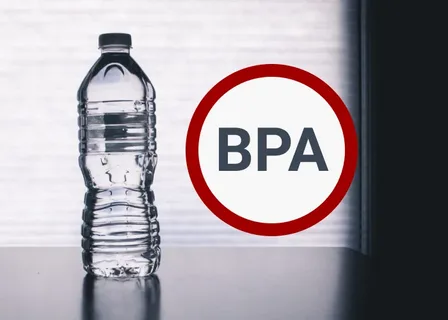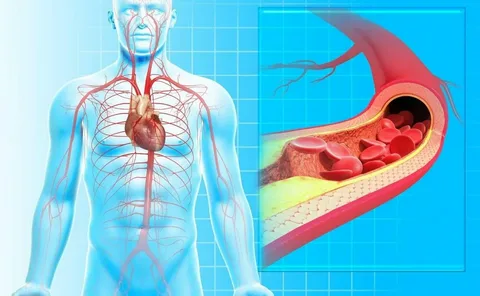What Is BPA?
Bisphenol A (BPA) is a chemical compound that has been used in the production of polycarbonate plastics and epoxy resins since the 1960s. It is commonly found in food and beverage containers, canned goods, medical devices, and thermal paper receipts. BPA is known as an endocrine-disrupting chemical, meaning it can interfere with the body’s hormonal system, potentially leading to various health concerns.
The Concerns Surrounding BPA
BPA has garnered attention due to its potential health effects, particularly its association with hormone disruption and its widespread presence in everyday products. Some of the key concerns regarding BPA include:
Endocrine Disruption
BPA can mimic or interfere with hormones in the body, particularly estrogen, leading to potential disruptions in hormonal balance. This interference can affect various bodily functions, including reproduction, metabolism, and development.
Health Risks
Studies have linked BPA exposure to a range of health problems, including reproductive disorders, metabolic disorders (such as obesity and diabetes), cardiovascular disease, and certain cancers. However, the extent of these risks and their implications for human health are still a subject of debate among scientists and regulatory agencies.
Vulnerability of Vulnerable Populations
Certain groups, such as pregnant women, infants, and children, may be more vulnerable to the effects of BPA exposure due to their still-developing hormonal systems and higher levels of exposure from certain products (e.g., baby bottles, infant formula cans).
Sources of BPA Exposure
BPA exposure can occur through various sources, including:
Food and Beverage Containers
BPA is commonly used in the lining of food and beverage cans and plastic containers, where it can leach into the contents, particularly when exposed to heat or acidic conditions.
Thermal Paper Receipts
BPA is often used in the coating of thermal paper receipts, and handling these receipts can lead to dermal exposure.
Plastic Products
Certain types of plastic products, such as water bottles, food storage containers, and baby bottles, may contain BPA, especially those labeled with recycling codes 3 and 7.
Dental Sealants and Composites
BPA can also be found in some dental sealants and composite materials used in dental procedures, although the risk of exposure from this source is considered to be low.
Regulatory Measures and Alternatives
In response to growing concerns about BPA exposure, regulatory agencies around the world have taken steps to restrict its use in certain products, particularly those intended for use by infants and young children. In the United States, the Food and Drug Administration (FDA) has banned the use of BPA in baby bottles, sippy cups, and infant formula packaging.
Furthermore, many manufacturers have voluntarily phased out the use of BPA in their products or have started offering BPA-free alternatives. These alternatives may use other materials, such as bisphenol S (BPS) or bisphenol F (BPF), which are considered by some to be safer alternatives to BPA. However, research on the safety of these substitutes is ongoing.
FAQs About BPA
What products commonly contain BPA?
BPA can be found in a wide range of products, including food and beverage containers (such as cans and plastic bottles), thermal paper receipts, dental sealants, medical devices, and household items made from polycarbonate plastics.
How does BPA exposure occur?
Exposure to BPA can occur through ingestion, inhalation, or dermal contact. The primary route of exposure is through the consumption of food and beverages stored in BPA-containing containers or cans.
What are the potential health effects of BPA exposure?
Research suggests that BPA exposure may be associated with a variety of health effects, including reproductive disorders, metabolic disorders, cardiovascular disease, and certain cancers. However, the extent of these risks and their implications for human health are still a subject of debate among scientists.
Are BPA-free products safer?
BPA-free products are made without the use of BPA but may contain other chemicals, such as bisphenol S (BPS) or bisphenol F (BPF), which are used as substitutes. The safety of these alternatives is still being studied, and some experts suggest that more research is needed to fully understand their potential health effects.
How can I reduce my exposure to BPA?
To reduce exposure to BPA, consider the following steps:
- Choose BPA-free or low-BPA alternatives whenever possible, especially for products used by infants and young children.
- Avoid microwaving food or beverages in plastic containers, as heat can increase the leaching of BPA into food.
- Use glass, stainless steel, or other inert materials for food and beverage storage whenever possible.
- Wash your hands after handling thermal paper receipts to minimize dermal exposure.
Should pregnant women and children be particularly cautious about BPA exposure?
Pregnant women, infants, and children may be more vulnerable to the potential effects of BPA exposure due to their still-developing hormonal systems and higher levels of exposure from certain products. As a precaution, pregnant women and parents of young children may choose to minimize BPA exposure by selecting BPA-free alternatives and avoiding products known to contain BPA.
Conclusion
Bisphenol A (BPA) is a chemical compound found in a variety of everyday products, including food and beverage containers, thermal paper receipts, and dental materials. While BPA has been associated with potential health risks, the extent of these risks and their implications for human health are still a subject of debate among scientists and regulatory agencies. Taking steps to reduce exposure to BPA, such as choosing BPA-free alternatives and minimizing the use of products known to contain BPA, can help mitigate potential risks and promote overall well-being.
- Lip Fillers Explained: A Beginner’s Guide For UK Residents - May 31, 2025
- Light Eyes Ultra – Dark Circles Treatment Near Merstham, Surrey - May 31, 2025
- What The Fake Plumping Lip Filler - May 31, 2025




